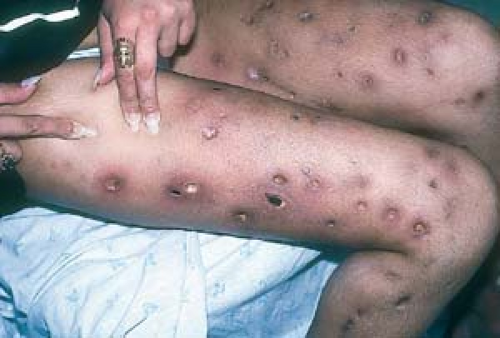Pruritus: The “Itchy” Patient
 Pruritus of unknown origin (PUO)
Pruritus of unknown origin (PUO)
Neurotic excoriations (factitia)
Pruritus of chronic renal disease
Pruritus caused by liver disease
Pruritus resulting from hypothyroidism
Pruritus resulting from hyperthyroidism
Pruritus resulting from Hodgkin’s disease
 Clinical variants
Clinical variants
Aquagenic pruritus
Notalgia paraesthetica
Brachioradial pruritus
Overview
Pruritus, the most common symptom of all skin diseases, can be simply defined as an unpleasant sensation that elicits the urge to scratch.
Pruritus may result from the following:
Common primary skin disorders such as eczema, lichen simplex chronicus, xerosis, psoriasis, lichen planus, or, rarely, dermatitis herpetiformis
Exogenous causes such as drugs, contact dermatitis (e.g., poison ivy), scabies, lice, fiberglass, and aquagenic pruritus
Internal disorders such as chronic renal failure, acquired immunodeficiency syndrome, polycythemia vera, cholestasis, pregnancy-related disorders, primary biliary cirrhosis, diabetes mellitus, thyroid disease, and carcinoid syndrome
Psychogenic causes such as delusions of parasitosis, neurotic excoriations, pruritus ani, and obsessive-compulsive disorder
Associated malignant diseases such as Hodgkin’s disease, leukemia, and multiple myeloma
Pruritis of Unknown Origin
Basics
Pruritus of unknown origin (PUO) is itching for more than 2 to 6 weeks with no determined cause.
Description of Lesions
Linear excoriations, crusts, lichenified plaques, and wheals may be present.
Pruritus with no lesions is also quite common.
Distribution of Lesions
Symptoms or clinical lesions may be localized (Fig. 15.2) or widespread.
Stay updated, free articles. Join our Telegram channel

Full access? Get Clinical Tree





